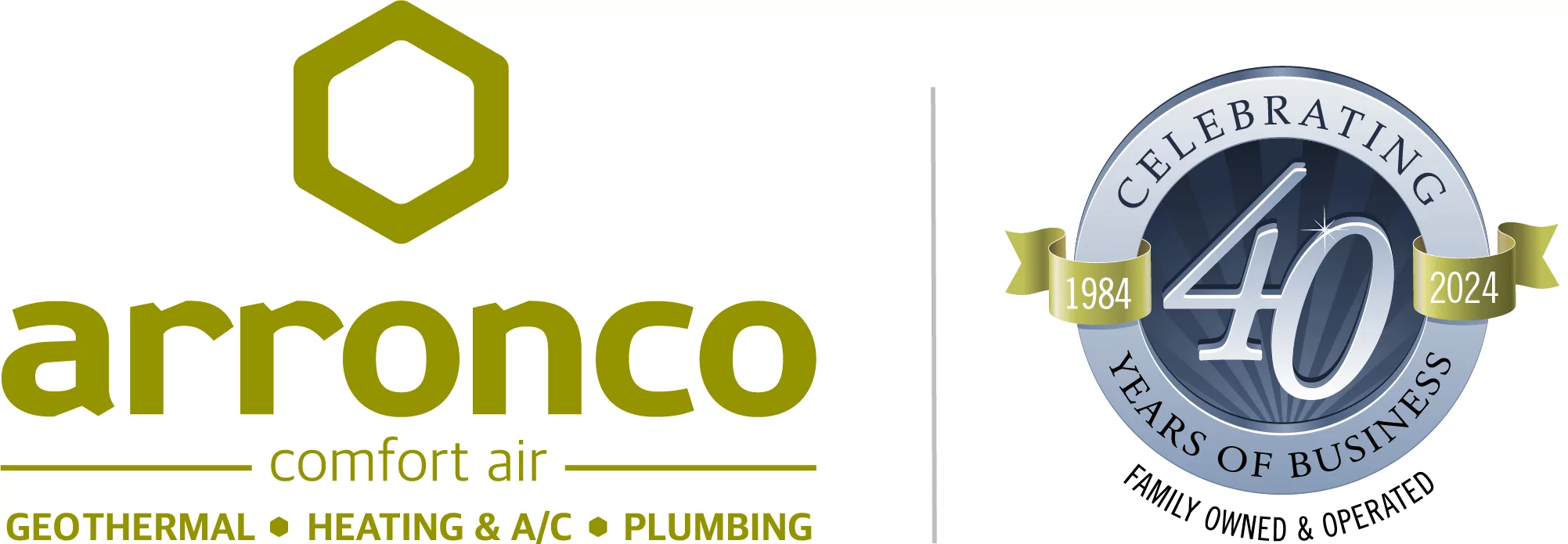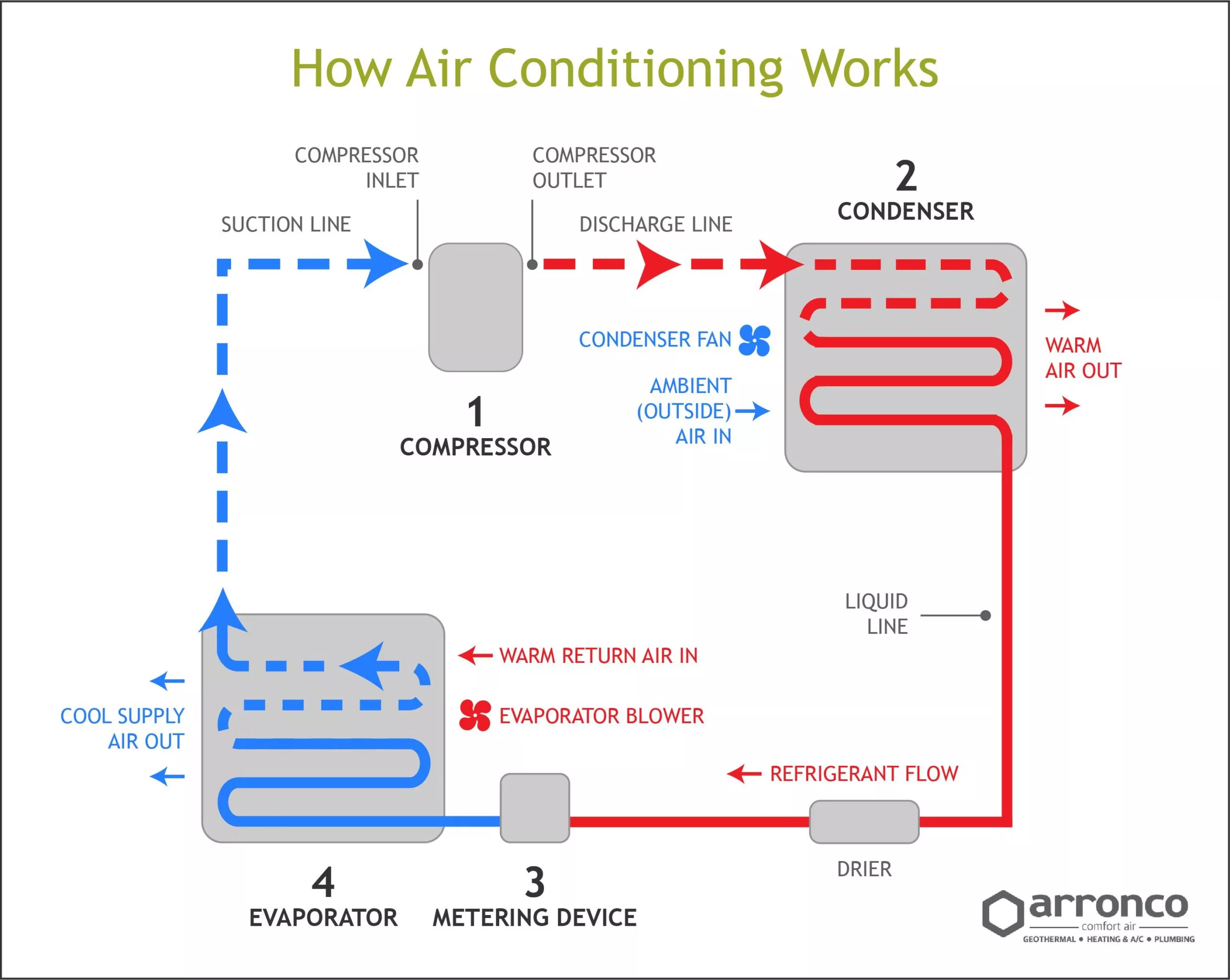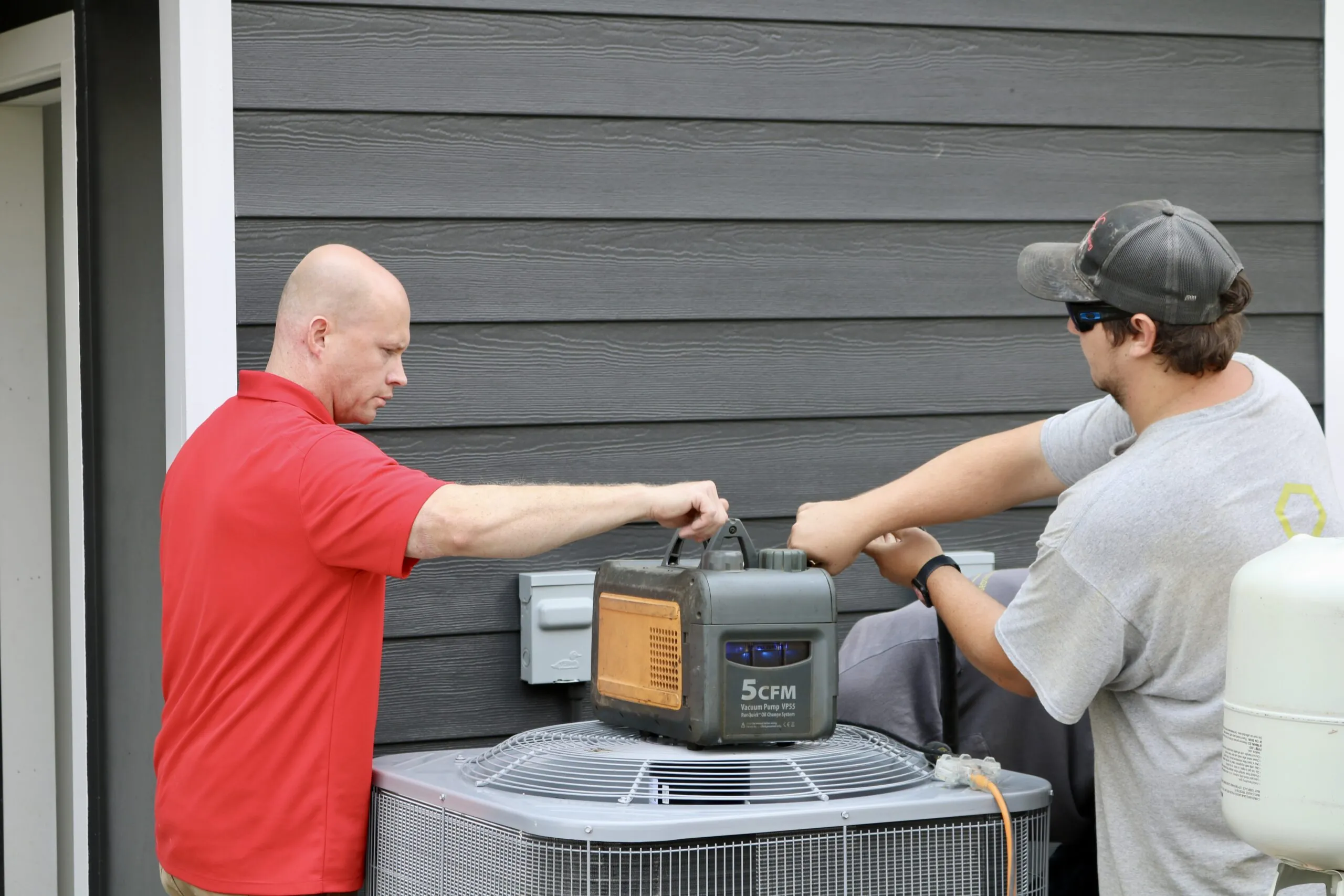How Do Central ACs Work?
You expect your air conditioner to do one thing: cool your home when you switch it on. However, your central AC system has many moving parts that all need to work together to make that happen, and understanding the basics of air conditioning can make it easier for you to catch issues with your system and use your AC with energy efficiency in mind.
In this blog, the journeyman-licensed technicians and installers at Arronco Comfort Air explain how the various components of your air conditioning system work together to keep your home cool.
Basic Principles of Air Conditioning
A central air conditioner transfers heat from one space to another. These systems pull heat energy out of the air in a home and send it outside, leaving only cooler air inside. The air conditioner then circulates this cooler air throughout the home.
To perform this process, an air conditioner needs various components to work together simultaneously to carry out the refrigeration cycle: compression, condensation, expansion, and evaporation in a closed circuit.
Components of an Air Conditioner
The basic components of an air conditioner are the compressor, the condenser, the expansion valve, and the evaporator coil. Every AC also needs refrigerant to do its job. During operation, these four components cool your home by converting the refrigerant through this process:
- Refrigerant enters the compressor as a low-pressure gas. It’s compressed before it moves out of the compressor as a high-pressure gas.
- Then, the gas flows to the condenser outside the home. The gas condenses into a liquid and releases heat into the outside air.
- From there, the liquid refrigerant moves to the metering device, which restricts the fluid’s flow and lowers its pressure as it leaves.
- The low-pressure liquid then moves to the evaporator, where heat from the inside air is absorbed and changes from a liquid to a gas. This cools the evaporator coil, which allows your AC system to blow cold air.
- Finally, the refrigerant — a hot, low-pressure gas — moves to the compressor, where the entire cycle is repeated.
Air Handling Unit
During the third phase of the refrigeration cycle — when the evaporator coil cools — the air handler comes into play. Now that the evaporator coil is cold, the air handler can blow hot air over it, cooling it down. Then, this newly cooled air is blown through the air ducts and fills the home with cool air. In homes with a furnace, the air handler will be part of the furnace system with an evaporator above it.
FYI: Because your cold air is dispensed through ductwork, ensuring your ducts and filters are clean is important. If there’s dust and debris in your ductwork or your filter is dirty, this process releases those contaminants into your indoor air supply. Staying on top of annual AC maintenance will help prevent this.
Thermostat and Controls
Your thermostat is your command center, allowing you to moderate the temperature throughout your home. Your central AC system waits for your thermostat to tell it that it’s time to kick on and begin the refrigeration cycle necessary to cool your home.
Depending on your thermostat model, you may even be able to fine-tune your HVAC system’s energy efficiency by setting it to follow certain routines with different modes throughout the day. Some smart thermostats even connect to Wi-Fi to offer advanced climate control technology.
How to Save Energy and Keep Your AC Bills Low
SEER, or Seasonal Energy Efficiency Ratio, is a rating scale that measures an HVAC system’s energy efficiency. The SEER rating of your HVAC equipment determines how energy-efficient it is and, therefore, how high or low your energy bills are. SEER ratings typically range between 14 and 18, with 18 being “very efficient.”
If you have an older AC unit, now is the time to upgrade to one with a higher SEER rating. For optimal energy efficiency, consider a heat pump with some of the best SEER ratings available today.
Other tips for keeping your energy bills low during the summer include:
- Setting your thermostat correctly: The Department of Energy suggests that the ideal temperature for a thermostat is 78 degrees Fahrenheit, but this might not be comfortable for everyone. Either way, setting your thermostat to a comfortable temperature and leaving it alone is best.
- Regular maintenance: Keeping up with routine AC maintenance can boost energy efficiency and reduce cooling costs.
- Alternative cooling: Using ceiling or tower fans in conjunction with your AC can help reduce wear and tear on your cooling system and lower energy bills.
Trust Arronco Comfort Air for AC Repairs in Northern Kentucky
The team at Arronco Comfort Air has provided air conditioning services since 1984. In our decades of serving Northern Kentucky, Lexington, and Cincinnati residents, we’ve resolved countless HVAC issues. We can quickly diagnose and completely resolve your AC problems. Don’t risk further damage to your HVAC system when a team of experts can handle the repairs and replacements for you.
Contact Arronco Comfort Air today to discuss your air conditioning repair needs and schedule prompt, professional service.
More Blogs
Contact Us
Today!
Subpage Bottom
Proudly Serving
Northern Kentucky
and Cincinnati, OH
Lexington | Cincinnati | And Surrounding Areas
View More




